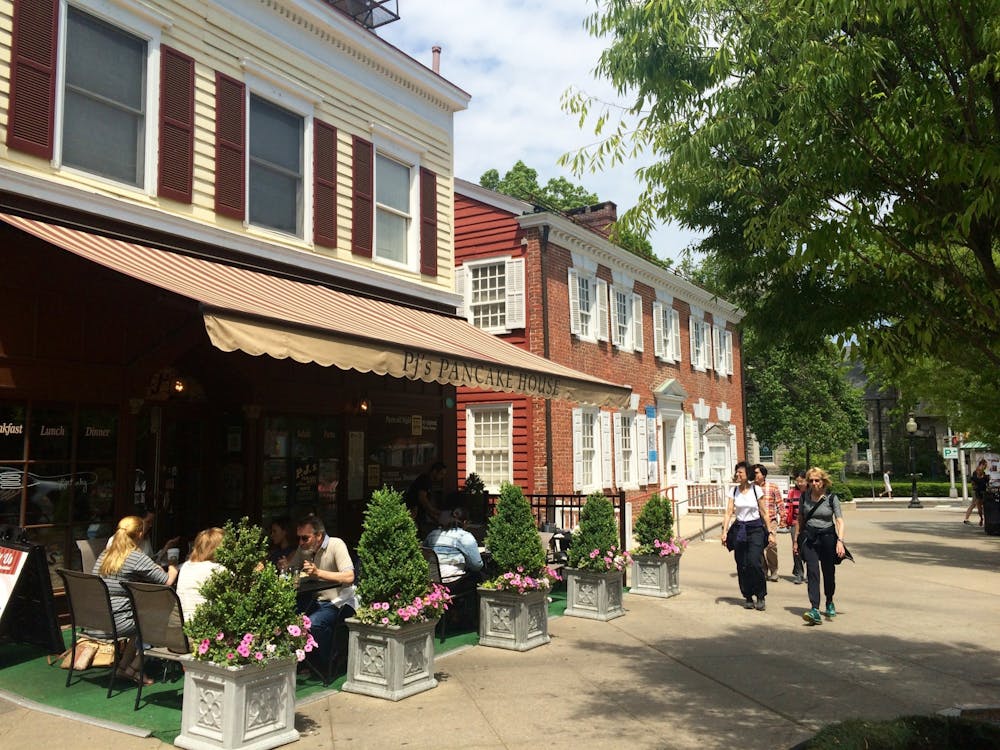In his novel "The Sun Also Rises," Hemingway writes of the large television set at the Frist Campus Center: "It was a fine television, and a very good one. When we sat in front of it we would drink vermouth that was cool and satisfying and we would watch "Joey," which was not so bad a show as critics later called it, but was in fact a very poor show. Often I would meet Jake Cohen there and we would watch the tennis matches. Cohen was a boxer at Princeton but thought of himself as someone who knew a great deal about tennis. He had two friends at Princeton, Walter Mondale and myself. Mondale was his watching-European-club-soccer-at-the-Frist TV friend. I was his watching-tennis-matches-friend." Hemingway had, of course, heard of the big screen set at Frist from F. Scott Fitzgerald, who attended Princeton and would often pass the hours sitting in one of the comfy leather chairs in front of the screen, sipping brandy and smoking a cigar. According to Princeton lore, Fitzgerald's favorite show was "Coach."
The very large TV that now occupies a small thruway on the first floor of Frist arrived at Princeton in 1887. Charles MacNeil Fastner '79, a sportsman and traveler, shot the TV while on safari in East Africa. The daguerreotype of Fastner posed smugly atop the downed appliance hangs under glass in a display case near the TV, a reminder of the set's long history and fascinating origins. Before the set arrived, Princetonians would have to trap smaller sets out in the Witherspoon Woods. These little "squaw boxes," as they were called, would only keep for a week or so, and students would have to go back into the woods once again. Even one so far removed from that time and its spirit as myself cannot help but feel an upwelling of nostalgia at the thought of the greatest young men of a generation, trekking through a snowy winter wood, breath hanging in the air, taking pulls from a hip flask as they scour the forest for a handsome set on which to watch the Super Bowl.
But the inconveniences of earlier times are always wiped from memory by the bittersweet fantasy of what was. In truth, the sizable new TV meant the glad end for small, perishable screens. This TV would probably remain usable forever, and Princeton warmed to it immediately. A Radiotelevision Spectator's Club was established in the year following the set's arrival. Others soon followed. While their peers at Harvard and Yale sat around the piano playing the latest sheet music hit, Princetonians watched softcore Cinemax and held their Horace and Ovid tightly over their laps.
Years went by and the set lit up the faces of generation after generation of Princeton men. The tumultuous years of the mid-20th century brought many changes to the traditional big screen culture of the school. More and more of the faces staring at the set resembled the faces of those who actually wrote and produced the TV shows. And in a bold, decisive moment for civil rights, Princeton turned on "Martin" for the first time in 1970.
Today, the screen in Frist mostly shows sports and news, but will probably show the Presidential debates, etc. The TV in Frist may have been tuned to the Republican National Convention — I can't say for certain. All I know is I sat down in front of the screen and the next thing I knew, I was a 35-year-old woman with a pinched and bitter blonde face, wearing a denim blouse and high-waisted Wrangler jeans. I was coming out of a special matinee of "The Lion King." And I never changed back. The end.







